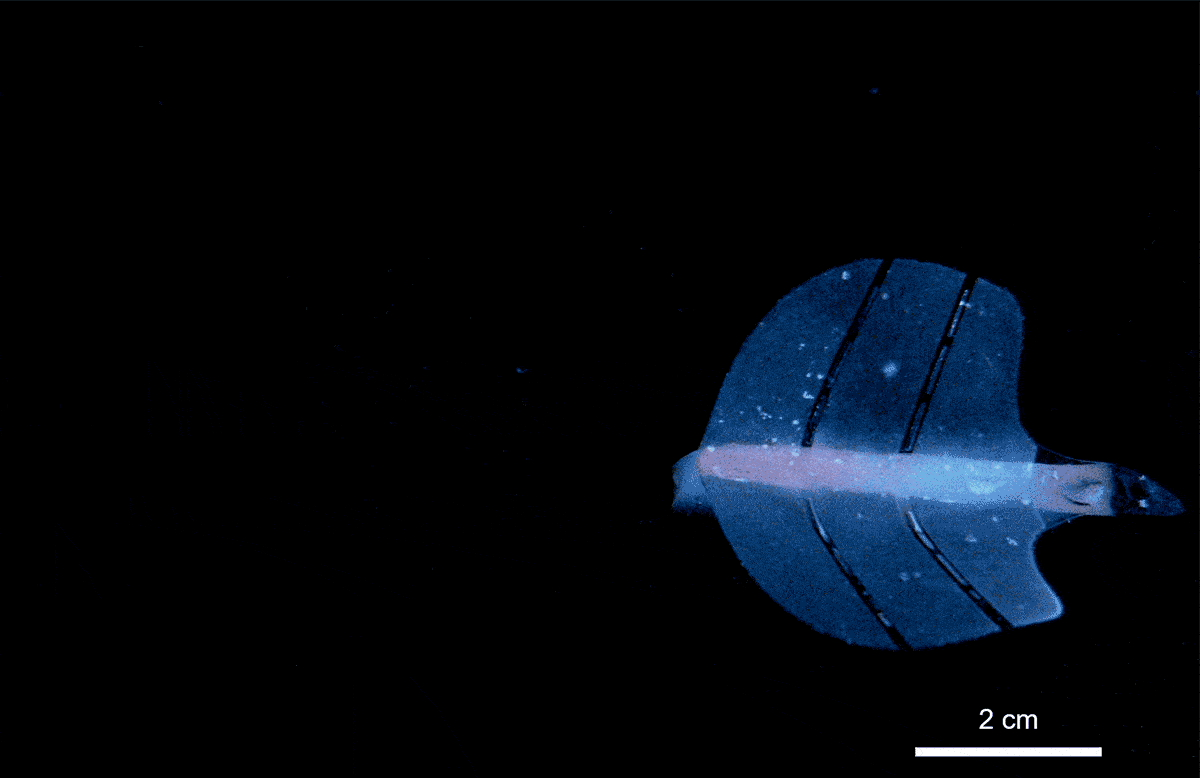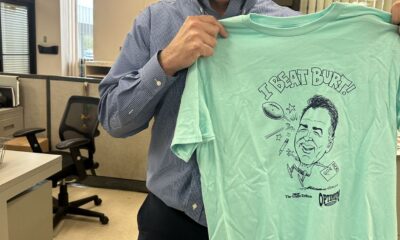Science
Ultrasound-Powered Artificial Muscles Revolutionize Robotics

A new breakthrough in robotics has emerged with the development of artificial muscles powered by ultrasound waves. Researchers at ETH Zürich have created a soft gel filled with microscopic bubbles that contract, grip, and lift with remarkable strength when stimulated by sound. This innovative approach, detailed in a study published in the journal Nature, could lead to advancements in soft robotics, surgical tools, and targeted medical treatments.
The challenge of creating artificial muscles that can mimic the suppleness and flexibility of living tissue has long been a focus for engineers and scientists. Traditional motors and hydraulic systems can generate force but often lack the finesse required for delicate tasks. In contrast, soft actuators that use heat or air pressure tend to be bulky and inefficient. Daniel Ahmed, a nanoroboticist at ETH Zürich, and his team took a novel approach by embedding thousands of air-filled microbubbles within a biocompatible gel. These bubbles are arranged in lattice-like patterns, allowing them to respond dynamically to varying frequencies of ultrasound.
By adjusting the ultrasound frequency and bubble sizes, the researchers successfully directed the gel to perform various movements, effectively turning sound waves into controllable motion. “By activating different sets of frequencies,” Ahmed explained, “you can actually get programmable muscle.”
Innovative Applications of Bubble Muscles
Several prototypes showcase the capabilities of these bubble muscles. One notable demonstration involved a claw-like gripper that securely closed around live zebrafish larvae without causing harm. Another prototype featured a stingray-shaped soft robot, whose fins moved gracefully under the influence of ultrasound, enabling it to swim smoothly through water, including within the stomach of a pig model.
The research team also tested the gel’s gripping ability on pig heart tissue, where a patch of the bubble-patterned gel adhered firmly and flexed in response to ultrasound for over an hour. Zhan Shi, a co-author of the study and former Ph.D. student in Ahmed’s lab, highlighted the potential for these systems in medical applications, stating, “We can actually use our system as patches for delivering drugs. That has really practical applications.”
Another promising feature of the ultrasound-driven artificial muscle is its compatibility with standard ultrasound imaging. The microbubbles can be monitored during operation, allowing for real-time assessment of their functionality. Since the actuation frequencies (ranging from 1 to 100 kilohertz) are significantly lower than those used in clinical imaging (1 to 20 megahertz), the two processes do not interfere with each other.
Future Challenges and Considerations
Despite these advancements, challenges remain. All current demonstrations have utilized deceased tissues, and further research is necessary to determine the technology’s effectiveness in living organisms. W. Hong Yeo, a bioengineer at Georgia Tech who was not involved in the study, emphasized the need for in vivo evidence to validate the system’s claims. He also noted that prolonged use can cause the bubbles to expand, diminishing functionality after approximately thirty minutes.
Nonetheless, the small size and rapid responsiveness of these bubble muscles make them a compelling option for biomedical implants. As research progresses, the potential for soft robots that can navigate confined spaces or surgical tools capable of nuanced movements appears promising. The integration of ultrasound technology into artificial muscle design may ultimately transform how we approach robotics and medical applications, paving the way for innovative solutions that enhance human capabilities and improve patient care.
-

 Sports2 weeks ago
Sports2 weeks agoSteve Kerr Supports Jonathan Kuminga After Ejection in Preseason Game
-

 Business2 weeks ago
Business2 weeks agoTyler Technologies Set to Reveal Q3 2025 Earnings on October 22
-

 Politics2 weeks ago
Politics2 weeks agoDallin H. Oaks Assumes Leadership of Latter-day Saints Church
-

 Science2 weeks ago
Science2 weeks agoChicago’s Viral ‘Rat Hole’ Likely Created by Squirrel, Study Reveals
-

 Entertainment2 weeks ago
Entertainment2 weeks agoZoe Saldana Advocates for James Cameron’s Avatar Documentary
-

 Lifestyle2 weeks ago
Lifestyle2 weeks agoKelsea Ballerini Launches ‘Burn the Baggage’ Candle with Ranger Station
-

 Lifestyle2 weeks ago
Lifestyle2 weeks agoDua Lipa Celebrates Passing GCSE Spanish During World Tour
-

 World2 weeks ago
World2 weeks agoD’Angelo, Iconic R&B Singer, Dies at 51 After Cancer Battle
-

 Business2 weeks ago
Business2 weeks agoMLB Qualifying Offer Jumps to $22.02 Million for 2024
-

 Sports2 weeks ago
Sports2 weeks agoPatriots Dominate Picks as Raiders Fall in Season Opener
-

 Health2 weeks ago
Health2 weeks agoRichard Feldman Urges Ban on Menthol in Cigarettes and Vapes
-

 Health2 weeks ago
Health2 weeks agoCommunity Unites for Seventh Annual Mental Health Awareness Walk








